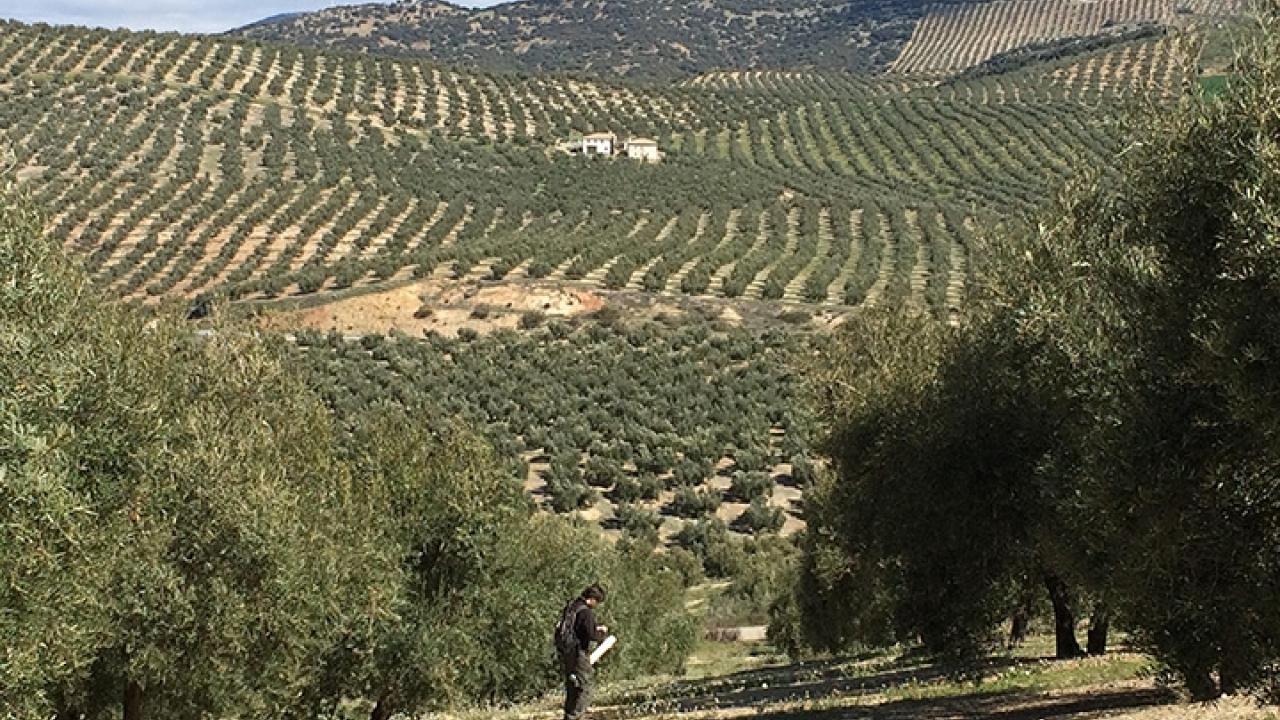Newly published research led by UC Davis ecologist Daniel Paredes suggests that pest abundances are less variable in diverse landscapes comprised of multiple crop types and patches of natural habitat.
"As a result, pest outbreaks are less likely in diverse landscapes," said Paredes, who analyzed a 13-year government database of diversified landscapes encompassing more than 1300 olive groves and vineyards in Spain. The database documented pests and pesticide applications.
The paper appears in the journal Ecological Applications. Co-authors are UC Davis distinguished professor Jay Rosenheim of the Department of Entomology and Nematology, and Daniel Karp, associate professor, Department of Wildlife, Fish, and Conservation Biology.
Pest variability understudied
Although population variability is often studied in natural systems, the need for long-term pest population data collected across many farms has largely prevented researchers from studying pest variability in agricultural systems, said Paredes, a postdoctoral fellow in the Karp lab.
"However, understanding variability in agriculture is key to understanding when pest outbreaks are likely to occur," Paredes said. “Farmers are really risk averse, with fear of very rare but severe pest outbreaks driving their decisions. But huge datasets are needed to understand when outbreaks are likely to occur and better inform management.”
“We found that more variable pest populations are more likely to downgrade crop quality and induce catastrophic damages,” Paredes said. “For example, the likelihood that olive flies consume more than 20 percent of olive crops doubled when comparing the most versus the least volatile populations.”
Causes of pest population variability
Having shown that more pest-population variability is more likely to cause problems for farmers, the researchers then set out to discover what farmers could do to manage variability.
One key factor that emerged was the type of landscape the crops were grown in, specifically whether the landscape was dominated by vast fields of a single crop variety or more diversified. Pest populations were both more abundant and more variable in crop monocultures.
However, while landscape type influenced both pest population sizes and variability, this was not always the case for other variables. “This research shows that the factors that promote high overall mean pest density are not necessarily the same factors that promote high variability in pest density,” Rosenheim said. “So, mean densities, which is what researchers have been studying for decades and decades, are only part of the story. Variation in density, and in particular unpredictable severe outbreaks, need to be studied separately.”
The take-away message?
“In Spain, planting multiple crops and retaining natural habitats would help stably suppress pests and prevent outbreaks,” said Paredes, a native of Spain who holds a doctorate in environmental sciences from the University of Granada. “Diversifying agricultural may be a win–win situation for conservation and farmers alike.”
"Therefore, we encourage agricultural stakeholders to increase the complexity of the landscapes surrounding their farms through conserving/restoring natural habitat and/or diversifying crops," the researchers wrote in their abstract.
Tapping into other large datasets such as this one, will be key to understanding whether diversified landscapes also help mitigate pest variability and outbreaks in other areas, they said.
This project was funded by the National Science Foundation with funds from the Belmont Forum via the European Biodiversity Partnership: BiodivERsA. It was also supported by the USDA National Institute of Food and Agriculture.
